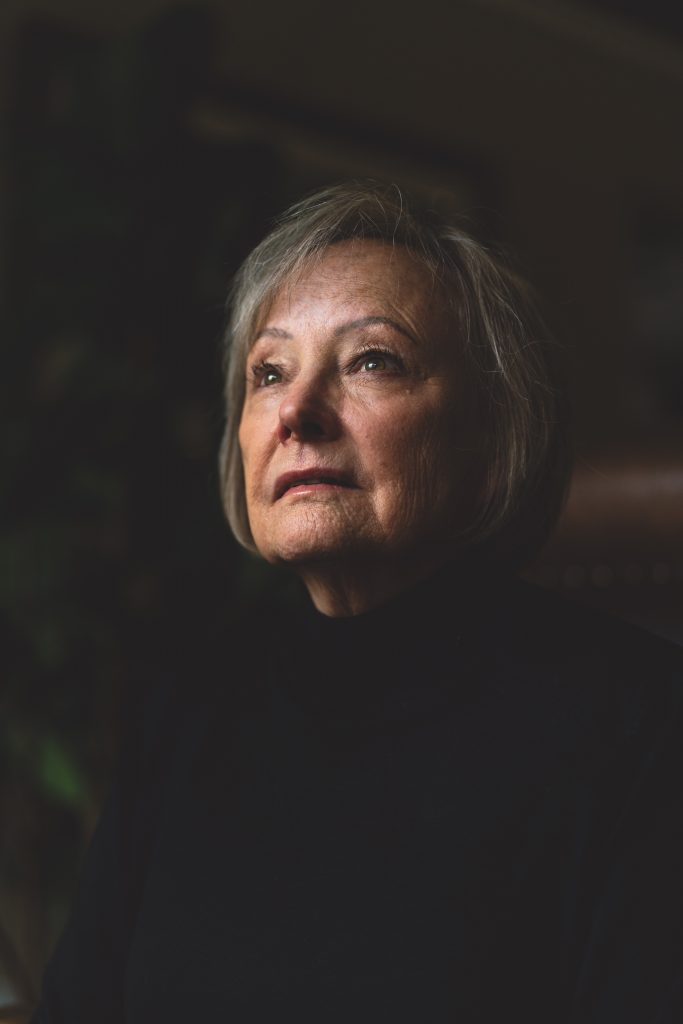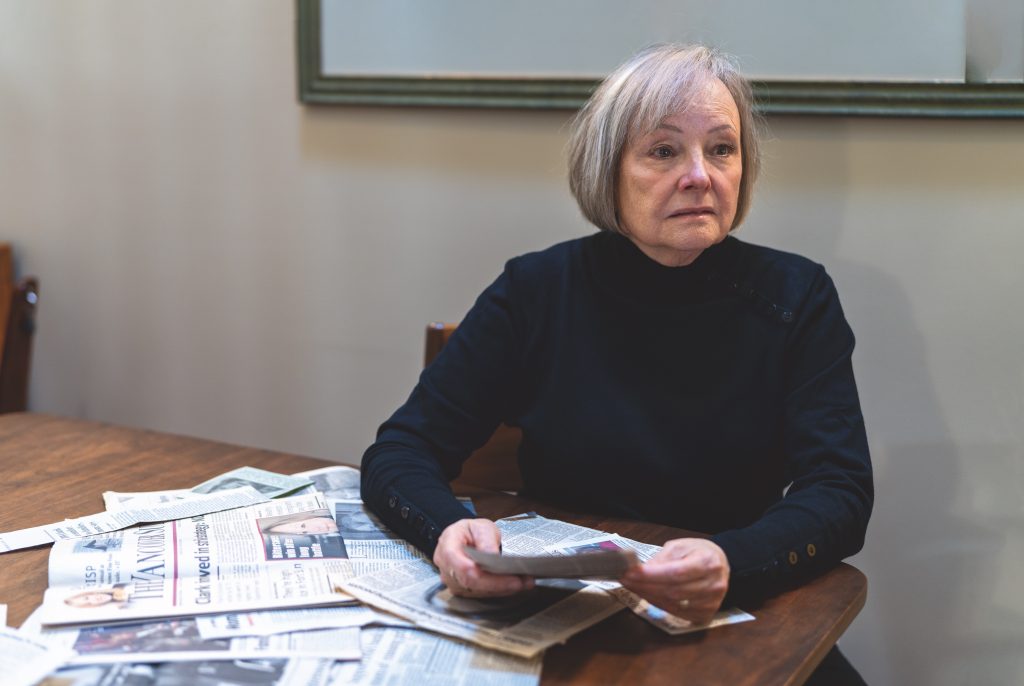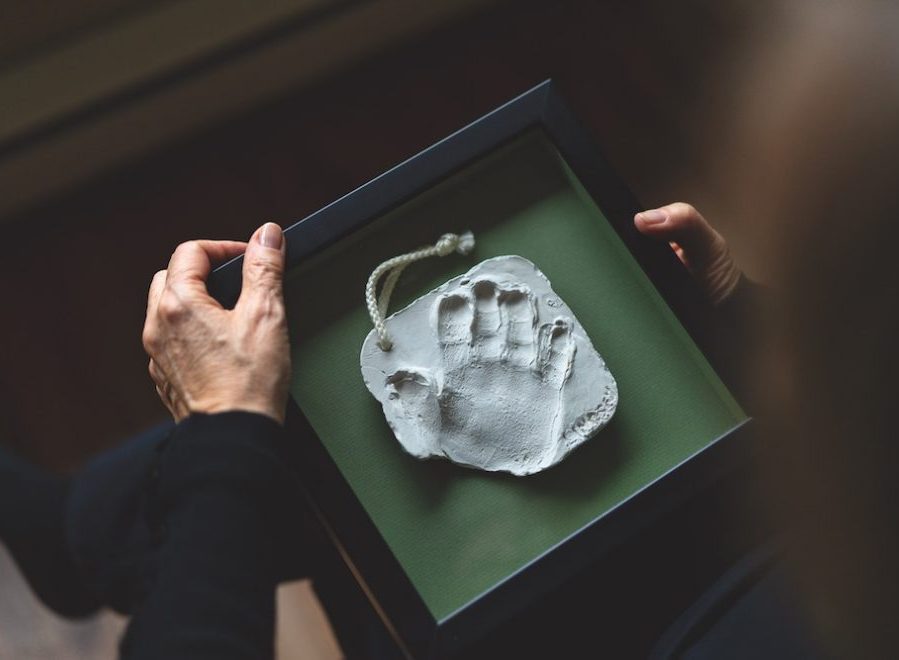The first time Lindsey Nicholls didn’t come home her mother got her back. It was during the final stages of the family’s move from Delta, B.C., to Comox on Vancouver Island. Lindsey’s mother, Judy Peterson, called the police.
Lindsey, 13, had gone to a friend’s without permission and got home just in time for the family of four — Peterson, her then-husband Martin Nicholls, Lindsey and their younger daughter, Kim — to make an evening ferry that day to the island.
You may unsubscribe from any of our newsletters at any time.
There, more devastating news awaited. Peterson’s father, who was in hospice care in Victoria, had slipped into a coma as they were packing for the move. About two days after they arrived in Comox, he died.
It was a cluster of terrible events. Peterson counts those summer days in 1992 as one of the worst periods of her life. But not the worst. That time would begin on the August long weekend about a year later, when Lindsey, then 14, disappeared without a trace.
Ever since, Peterson has searched for her daughter. She has put up posters, combed Vancouver streets — where Lindsey had friends — and launched publicity campaigns on the many anniversaries of Lindsey’s disappearance. It all came to nothing. And then she devoted more than 15 frustrating years to lobbying the federal government to develop a national missing persons DNA database so she could search the whole country for Lindsey’s remains.
Her work has reached far beyond her own tragedy: it has transformed the odds for other Canadians whose loved ones have gone missing. As of June 2024, the National Missing Persons DNA Program contains more than 2,500 DNA profiles from missing persons, family members and unidentified human remains. The program has helped identify more than 90 people in about five years of operation, far more than anyone expected.
Peterson, now 69, doesn’t consider herself a hero. The possibility of being depicted as one was her greatest worry when I asked her to tell me her story. She views herself as an ordinary person, flawed and doing her best to cope with an unimaginably difficult and painful situation.

When we began the interviews, I agreed with Peterson’s assessment. It took a while to understand that being heroic has nothing to do with occupying a pedestal or being superhuman. Instead, it happens when we employ our humanity and compassion to guide actions, when we rise to challenges even when they seem insurmountable.
And that is Judy Peterson in a nutshell.
***
Peterson crushes the five video interviews that we did together for this profile, beginning in 2023. She arrives on camera sporting an appearance both studied and casual: her jaw-length blonde hair looks carefully but simply styled, her clothes relaxed and comfortable. When listening to the questions or responding, she often gazes directly at her computer’s camera. There’s rarely a hesitation. Once, as she describes her decades-long search for Lindsey, tears well up. She doesn’t try to hide them or apologize. Instead, she grabs a tissue, dots at her eyes and then resumes, her gaze again steady and her responses even. It’s in these brief overlaps between vulnerability and determination that the toll of Lindsey’s long absence seems clearest.
We talk about her tears in the following interview and how careful she is about sharing her feelings. When she speaks to politicians, media or the police, “it’s not like you can just bring a box of Kleenex and sob in front of them,” she says. “You want to be able to say, ‘This is my issue,’ tell people what the solution is and ask them, ‘What are you going to do about it?’
“I couldn’t just sit there and cry, ‘Oh my God, my daughter.’ It wasn’t the venue.”
She’s cautious, too, about the details she shares, such as those about Lindsey running off to a friend’s home before the family moved to Comox. Telling the story creates the risk of people assuming that Lindsey was merely a runaway. Peterson is convinced nothing could be further from the truth. “Lindsey was a victim,” she says.
Nevertheless, problems existed. In Delta and Vancouver, Lindsey had fallen in with friends whose behaviour made her parents nervous. She argued with her mother and father. She ran away eight months after the family moved to Comox. When they found her, Lindsey agreed to return only if she could stay in a foster home outside town, and that’s where she was living when she disappeared for good.
Before she was transferred there, Lindsey stayed for about a week at a group home near her family. During that time, they kept in touch by phone and Lindsey occasionally visited. Peterson was confident they could work it out. “I’ve talked to so many parents whose teenagers were in a bad spot and the family was probably not doing the best, whatever it was, but they got through to the other side. Whereas, you know, Lindsey vanished so we never got the opportunity to get to the other side.”
Because their relations were turning a corner, and because of everything Lindsey left behind — her coat, her treasured teddy bear — Peterson feels certain her daughter did not vanish of her own volition. Lindsey valued her family relationships. Even if she had been mad at her immediate family for some reason, she would have contacted her grandparents or uncles, Peterson says. In this respect, Lindsey and her mother are two peas in a pod: family means the world.
More on Broadview:
Judy Peterson may have learned grit and determination long before Lindsey vanished, but she didn’t expect to need them so desperately. Growing up in Alberta in the 1960s, young Judy Wopnford, as she was then, assumed life would play out for her much as it had for her parents. Max Wopnford was an oil industry executive who specialized in community relations. Vonnie Wopnford, a stay-at-home mom and avid golfer, had married young. So had Judy’s older brothers, Bob and Jim.
Judy met Martin Nicholls in Grade 10 when her family moved from Edmonton back to Calgary, where she had been born. They married five months after her high school graduation.
In 1978, Nicholls, who worked for the RCMP, transferred to Merritt, B.C., and the couple said goodbye to the bustle of the city for small-town life among the aspen and pines.
The adjustment was a struggle. It was an isolated place, and it was hard for Judy to leave her family and friends. She pushed out anyway, first working part time and then starting her own aerobics business. Both Lindsey and Kim were born in Merritt about four years apart. In 1982, the RCMP transferred Nicholls to another detachment in Gold River, a tiny mill town on Vancouver Island, a little over an hour’s drive west from Campbell River.
The couple thrived: Martin joined the volunteer firefighter department; Judy befriended the wives of the other volunteer firefighters and continued her aerobics business. “We made a ton of friends,” she says. Then came another transfer, this time to an RCMP position in Vancouver. The family lived in Delta, a nearby city on the Lower Mainland. With the return to a city, Judy began to stretch her wings. She sold real estate and studied toward a certificate in health and fitness. She went on to earn another certificate in human resources and landed a job at BC Hydro.
Her career grew more demanding; so too did her daughters’ activities and needs. They were a busy family who enjoyed skiing and boating. Kim did well in school. Lindsey, on the other hand, began to struggle in Grade 4. Lindsey was transferred to a small private school and her struggles eased. But when the school relocated to another community, Lindsey went back into the public school system.

Peterson counts the decision as “one of my many regrets.” In junior high, Lindsey made friends who concerned her parents. “Some of the notes that I had read from some of them alarmed me,” Peterson recalls. Lindsey started dating a man in his late teens. One night, she arrived home with cigarette burns on her skin. Between the strains of city life, their daughter’s problems and their own growing apart, Judy remembers her relationship with Martin deteriorating. She says they tried counselling, but it wasn’t working. “I had been struggling for a long time deciding [whether] I should leave or not,” she says.
Judy turned to her family for support. She often visited her parents who lived in a community just outside Victoria a short ferry ride away. She also kept in touch with her friends from Gold River.
Then Nicholls was offered a transfer to the RCMP in the Comox Valley. They both welcomed the opportunity to return to the island that held happy memories. As had happened many other times when they had moved to advance Nicholls’s career, there was a price: Judy’s work. She felt that this time, the benefits outweighed the costs. Life in Delta had been expensive, and it was hard to get ahead. In Comox, they could afford a home with a span of living room windows that offered views of the ocean and, beyond that, the Comox Glacier. The change would help them regain their feet as a family. “It was going to get us to a safe small town — which is so ironic,” says Peterson.
***
Just before the August 1993 long weekend when she disappeared, Lindsey spoke with her mother from the foster home. The home was in Royston, a rural community in the Comox Valley. During the call, Judy remembers that her daughter complained about the housing conditions and the age of the woman fostering her.
“I thought good — I didn’t say it — you’re going to want to come home,” Peterson says. She told her elder daughter that she missed her and loved her.
Peterson, her husband, Kim and a friend left for a long weekend boat trip to Desolation Sound, a marine park on the mainland coast. They returned about a day early and Peterson called Lindsey the next morning. Peterson remembers that the foster mother told her Lindsey had gone out the day before and hadn’t returned. “She hadn’t reported her missing, so I did,” Peterson says.
According to the RCMP, Lindsey was last seen on Aug. 2, 1993, walking down Royston Road in the Comox Valley wearing blue jeans, a khaki top and white canvas shoes.
In the first days of Lindsey’s absence, Peterson remembers everyone — especially local police — downplaying the concern. “Everybody’s saying, ‘Oh well, you know, it’s a long weekend; it’s Filberg Festival; there’s a lot of people who come in for those things, kids go out to the lake and party,’” she says.
As the days of Lindsey’s disappearance accumulated, Peterson deflected her mounting panic by making posters with Lindsey’s picture and information about her disappearance. She taped them up in stores around Comox. She called Lindsey’s friends, then called them again and again.
“I thought, well, maybe she’s in a commune somewhere. That was my biggest hope, which would have been my mother’s worst nightmare.…But I was thinking, well, you know, it wouldn’t be that bad if she’s somewhere growing organic vegetables.”
About six weeks after Lindsey vanished, Judy got in touch with the Missing Children Society of Canada, a not-for-profit organization that supports families in their search for children who have disappeared. They sent Fred Maile to investigate. Maile, now deceased, was a retired RCMP officer who had worked on the case to catch serial killer Clifford Olson. Peterson says with Maile’s help, the investigation into her daughter’s disappearance began in earnest. Peterson remembers being told that Lindsey had been hitchhiking in the days before her disappearance.
“No one thought she was just missing,” says Gary Bass, a now-retired RCMP officer who got involved in Lindsey’s case when it was bumped up from the local police division to British Columbia’s major crimes section. “We always thought there was foul play,” he says, referring to his major crimes team, who first looked at the case in about 1995.

Other aspects of Judy’s life proceeded in a blur. She drove Kim to soccer and baseball. Her relationship with Nicholls continued to decline. In November 1993, four months after Lindsey vanished, they agreed to separate. Judy and Kim lived together. She decided to return to school to complete a diploma in business administration and enrolled in North Island College in nearby Courtney.
School led to work as a co-op co-ordinator, which involved finding work placements for students in the college’s business and computer programs. She drew support from friends. Four years after Lindsey disappeared, Judy married Linden Peterson.
Even as life moved on, her commitment to finding Lindsey never faltered. “I don’t know where it came from, the determination [to keep pushing],” Peterson says. “You just don’t have any choice. It’s not like I had an option to crawl into bed and not do anything.”
***
By 2000, seven years after Lindsey disappeared, Peterson was looking for a new approach. She turned to DNA, hoping that filing Lindsey’s in Canada’s new national databank would expand the search. Then she discovered that the databank, used in policing to compare DNA found at crime scenes with that of convicted offenders, had no missing persons program. (That component had been removed during parliamentary proceedings, mainly because of privacy concerns at the time.) She was dumbfounded.
Realizing that the national databank could not help, Peterson contributed her own DNA to the British Columbia Coroners Service, which then ran one of the country’s leading operations in missing persons DNA identification. The team found no match in its records or database. Nevertheless, Peterson knew that if Lindsey’s remains turned up in the province, investigators now had a way to confirm the match.
Haunted by the idea that Lindsey’s remains might surface outside the province and elude identification, Peterson embarked on what became a marathon lasting more than 15 years to establish the missing persons database. “I needed to make it so that I would know,” she says. One of the ways she started was by writing to every elected politician she could think of, asking them to add a missing persons component to the national databank. She convinced her local members of Parliament — Gary Lunn and, later, Elizabeth May — to advocate for her cause.
In 2003, Lunn introduced a private member’s bill and nicknamed it Lindsey’s Law. The bill was reintroduced in various forms in 2004 and again in 2006, but stalled because of discussions on how to share the costs of its operations between the federal government and the provinces.
Then, in 2013, a breakthrough. Peterson met John Duncan, chief government whip, the official in charge of keeping party members in order. The MP for Vancouver Island North promised to help. He arranged for Peterson to meet Peter MacKay, then minister of justice and attorney general of Canada, and Steven Blaney, then minister of public safety. Soon after, Jim Flaherty, then minister of finance, agreed to put the expansion of the database onto the books.
In 2014, Peterson’s nearly decade and a half of lobbying finally paid off. In February, Flaherty announced more than $8 million in funding to establish indices for missing persons and unidentified human remains in the national DNA databank as part of the federal budget.
Peterson took time off work and flew to Ottawa for the announcement. Flaherty mentioned her in his speech. It took everything for Peterson to stifle her emotions. “It was surreal just being there,” she says. Known as Lindsey’s Law, the changes to the DNA Identification Act finally passed royal assent in December 2014 and launched in 2018 after an election and change of government.
Lindsey’s DNA, preserved on clothing that Peterson had taken from the foster home when her daughter first went missing, was the first added to the databank.
Today, the National Missing Persons DNA Program, with more than 2,500 DNA profiles, is in the databank maintained in Ottawa by the RCMP. The program is one of several services that the RCMP-run National Centre for Missing Persons and Unidentified Remains and National DNA Data Bank offer to help police, coroners and medical examiners locate and identify people.
Ingrid Muhlig, manager of missing persons DNA operations, says the program has exceeded expectations. “We thought we would get one to two cold hits a year,” she says. In reality, the program has helped in the identification of more than 90 people in just over five years.
Knowing the program is producing results brings Peterson a deep sense of satisfaction, but the success is bittersweet. So far, it has not delivered answers on Lindsey’s disappearance.
***

Since Lindsey vanished, Peterson has heard reports of 41 significant leads. Sometimes, she says, investigators don’t want to upset her, so they check out the lead and update her later. Hundreds of people have called in tips or sent pictures. “Somebody thought she was on the bus,” she says. In 2021, news reports speculated about a skull fragment found in waters off Victoria. There have been two forensic digs. Psychics have been pressed into service.
Once, she thought she spotted Lindsey in the background of a Vancouver newscast. Police sent her a video to identify the girl. It wasn’t Lindsey. “It’s like, ‘Oh my God, this is it, this is how I’m going to find out’ — and then it’s nothing, and you’re back to the bottom again, waiting and wondering what else you can do.”
For years, Peterson believed Lindsey was alive. As the 20th anniversary of her daughter’s disappearance approached, she began to believe the opposite: that Lindsey died soon after
she vanished. “I feel like the realization has been there the whole time,” Peterson says. But time “buries the hope, or the scenarios become less and less likely.”
Time, however, hasn’t absorbed the grief. Peterson keeps the Life Savers she bought to put in Lindsey’s Christmas stocking the year she disappeared. She still has Snowflake, the teddy bear Lindsey took with her when she ran away but left behind when she vanished.
About five years after Lindsey disappeared, Peterson began to write sporadically. She retired from her full-time job in 2015 and these days is considering writing a book. “I do feel lately the need to get all of the stories out of my head, boxes of files, newspaper clippings, media reports, emails and put them into some sort of order,” she says.
And she continues to search for Lindsey. Kim Nicholls says some people might ask her mother why she can’t let it go. “This constant effort helps my mom to know she is doing everything she can,” Nicholls says, adding: “She is legitimately doing everything that she can, not just to find Lindsey, but to prevent this from happening to any other family.”
Ron Fourney was the one who helped me see the heroism in Peterson’s efforts. Fourney, the retired RCMP director of science and strategic partnership, was in charge of the federal DNA databank when Peterson lobbied for changes. Like many others interviewed, he described Peterson as a tenacious and committed advocate.
Then Fourney told me that the extraordinary determination that has fuelled Peterson’s quest for answers and change is actually common among those whose loved ones have gone missing. “They all have this inner energy and resourcefulness,” explains the man who has investigated numerous disasters over the years, including the 1998 crash of Swissair Flight 111 into the Atlantic Ocean near Peggy’s Cove in Nova Scotia.
Yet Peterson took it even further. In harnessing this energy born of her continuing grief, she helped create a system to ease the grief of others. She “took that energy and pushed it forward to create something that was good and powerful for everybody in Canada,” he says.
Back in Sidney, where she lives on Vancouver Island, Peterson now writes with her book manuscript in mind. She keeps up the search by remaining in touch with the police officers investigating her daughter’s disappearance and by talking to journalists when she can. She emphasizes the support underpinning all her efforts. Family and friends — especially her current husband, Linden, and Kim — make the long search possible and bearable. “I don’t know what I would have done without them,” Peterson says. These days, she tries to cope by living in the moment and feeling grateful.
She recalls going for a walk one morning in late January. The sun shone as she strolled past the marina. Gulls pierced the air with their cries. She felt joy. But that didn’t mean she had forgotten Lindsey. That will never happen.
***
Mary Baxter is a journalist and historian in London, Ont.














